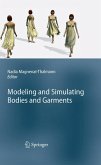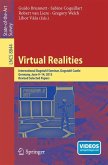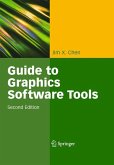The book presents all aspects of body and garment modeling for animated virtual humans. It describes how we can define fast and precise human body shapes, either from input dimensions or from body scans, how we can use predefined motions and retarget them, how we can easily create 3D garments from 2D patterns and animate them, and how we can retarget interactively various garment sizes while giving new body dimensions. A case study presents the making of the award winning film ' High Fashion in Equations'. Finally, the book describes how simulation processes can be applied to the garment industry and how we interact with an online platform for virtual clothing. This book is truly interdisciplinary as it describes the technical concepts as well as the design aspects and the problems of the clothing industry to be solved today.
This book contains the research on modeling bodies, cloth and character based adaptation performed during the last 3 years at MIRALab at the University of Geneva. More than ten researchers have worked together in order to reach a truly 3D Virtual Try On. What we mean by Virtual Try On is the possibility of anyone to give dimensions on her predefined body and obtain her own sized shape body, select a 3D cloth and see oneself animated in Real-Time, walking along a catwalk. Some systems exist today but are unable to adapt to body dimensions, have no real-time animation of body and clothes. A truly system on the web of Virtual Try On does not exist so far. This book is an attempt to explain how to build a 3D Virtual Try On system which is now very much in demand in the clothing industry. To describe this work, the book is divided into five chapters. The first chapter contains a brief historical background of general deformation methods. It ends with a section on the 3D human body scanner systems that are used both for rapid p- totyping and statistical analyses of the human body size variations.
This book contains the research on modeling bodies, cloth and character based adaptation performed during the last 3 years at MIRALab at the University of Geneva. More than ten researchers have worked together in order to reach a truly 3D Virtual Try On. What we mean by Virtual Try On is the possibility of anyone to give dimensions on her predefined body and obtain her own sized shape body, select a 3D cloth and see oneself animated in Real-Time, walking along a catwalk. Some systems exist today but are unable to adapt to body dimensions, have no real-time animation of body and clothes. A truly system on the web of Virtual Try On does not exist so far. This book is an attempt to explain how to build a 3D Virtual Try On system which is now very much in demand in the clothing industry. To describe this work, the book is divided into five chapters. The first chapter contains a brief historical background of general deformation methods. It ends with a section on the 3D human body scanner systems that are used both for rapid p- totyping and statistical analyses of the human body size variations.
From the reviews:
"This book is a clear must for the virtual human model animation specialist and should become a bible for the developers of software systems for the garment industry. ... This work is a rare reading pleasure for the computer scientist ... . Written in a high level style which guarantees access to a wide audience of readers, the book includes a rich list of references ... . These references allow the interested computer scientist to acquire the details of the techniques described on the text." (Cesar Alberto Bravo Pariente, The IEEE Latin America and the Caribbean Magazine, Vol. 22 (3), June, 2011)
"This book is a clear must for the virtual human model animation specialist and should become a bible for the developers of software systems for the garment industry. ... This work is a rare reading pleasure for the computer scientist ... . Written in a high level style which guarantees access to a wide audience of readers, the book includes a rich list of references ... . These references allow the interested computer scientist to acquire the details of the techniques described on the text." (Cesar Alberto Bravo Pariente, The IEEE Latin America and the Caribbean Magazine, Vol. 22 (3), June, 2011)








